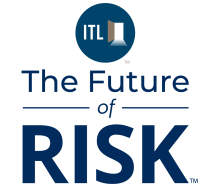With July marking peak cyber insurance renewal season, thousands of organizations are receiving updated policies that require immediate attention—not just for coverage review but for secure storage.
This timing is critical: Over the past six months alone, we've witnessed multiple incidents where threat actors obtained copies of cyber insurance policies from client networks and weaponized that information during ransom negotiations. These attackers used coverage details to calibrate their demands, turning the very documents meant to protect organizations into tactical advantages for cybercriminals.
Your cyber insurance policy is designed to protect your business when attackers strike, but what happens when the policy itself becomes the target?
Enterprise-grade protection for critical documents
Fortunately, this is a solvable problem. Securing your cyber insurance policy requires the same rigor you'd apply to protecting customer data or financial records.
First, start with the basics. Organizations should limit the number of copies of the policy that exist, because the more copies available, the more likely one is to get into the wrong hands. Then, tightly restrict who has access to the policy – really only someone on your risk team or your finance team needs to know how to locate it. And make sure they know that if they do need to share it with someone, it should only be shared via encrypted email or secure file transfer.
Consider these additional methods to protect your policy:
1. Store the documents in a purpose-built digital vault
Consider enterprise digital vault platforms specifically designed for sensitive document management.
These specialized solutions provide institutional-grade security with advanced encryption protocols that go beyond what standard cloud storage offers. Secure sharing workflows eliminate risky email attachments by providing controlled, authenticated access to documents without exposing them to email security vulnerabilities.
Built-in compliance tools for retention policies and regulatory requirements help ensure you meet legal obligations for document storage and disposal. Granular permission controls including view-only access and watermarking give you fine-tuned control over how documents can be used and shared.
Integration capabilities with existing business processes ensure that enhanced security doesn't disrupt your operational workflows.
2. Store the data in an encrypted state
Move beyond basic cloud storage to solutions that offer end-to-end encryption where even the provider cannot access your data.
The foundation starts with AES-256 encryption for data at rest and TLS for data in transit, ensuring your documents remain protected both while stored and during transfer. Equally important are customer-managed encryption keys stored separately from the data, giving you complete control over who can decrypt your files.
Look for services that offer zero-knowledge architecture, ensuring provider staff cannot view your files even if they wanted to. Finally, verify compliance certifications like ISO 27001, SOC 2, and GDPR readiness to ensure your chosen platform meets enterprise security standards.
Pro tip: Avoid consumer-grade cloud services for business documents. The convenience isn't worth the security trade-offs.
3. Control who can access the stored data
Implement robust access management that goes beyond simple passwords.
Start with role-based access control (RBAC) limiting document access to essential personnel only, ensuring that each user can only access documents relevant to their role and responsibilities. Multi-factor authentication (MFA) for all accounts with document access provides a crucial second layer of defense, significantly reducing the risk of compromised credentials leading to unauthorized access.
Single sign-on (SSO) integration for centralized identity management streamlines administration while maintaining security standards across your organization. Comprehensive audit trails tracking all access attempts and activities provide visibility into who accessed what and when, enabling rapid detection of suspicious behavior.
Finally, regular access reviews to remove orphaned accounts and unnecessary permissions ensure that former employees or users who no longer need access can't inadvertently create security gaps.
Regulatory alignment and compliance
Your document security strategy should also align with established frameworks:
For U.S. Organizations:
- Follow NIST Cybersecurity Framework guidelines for data protection
- Implement controls consistent with sector-specific regulations (HIPAA, GLBA, etc.)
- Consider NIST SP 800-171 Rev. 3 requirements if handling sensitive government data
For European Operations:
- Ensure GDPR compliance for any personal data in policy documents
- Implement "appropriate technical and organizational measures," including encryption
- Establish data retention policies and secure deletion procedures
- Verify that cloud providers offer GDPR-compliant Data Processing Agreements
Your insurance documents deserve insurance-grade security
Cyber insurance exists to protect your business when security controls fail. Shouldn't the policy itself be protected with the same rigor you apply to your most valuable digital assets?
By treating your cyber insurance documents as the high-value targets they truly are, you eliminate a potential attack vector while ensuring these critical protections remain available when you need them most. In an era where every document can become a weapon in the wrong hands, securing your insurance policies isn't just good practice—it's essential risk management.
Cybercriminals already understand the value of your insurance documents. The question is: do you?






